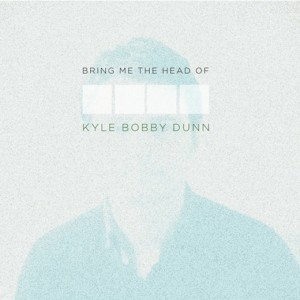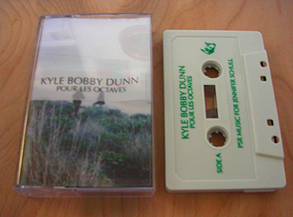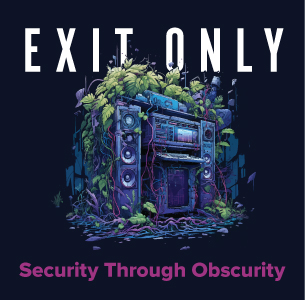There seem to be more vertiginous twists, added dimensions, not deriving from textural or instrumental paradigm shift, more from long steeping in the same materials, increasingly expert knowledge—of tone colours and contours, and their affective frequencies. It’s this that’s at the heart of what seem to be less oblique strategies—more deliberate, even manipulative directorials.

[Release page] There’s something about Kyle Bobby Dunn. A bit studied, a bit arch, whether person or persona, there’s a sort of sardonic knowingness you could maybe compare to the response (in the year of publication) of some in the popular literary world towards the ironic voice of Dave Eggers and his Heartbreaking Work of Staggering Genius. Not to stretch it too far, the admirer (let’s say this reviewer, for the sake of argument) in the act of wielding words like “important” or “essential” is given pause, moving to a more remote, considered appraisal. More than irony this album bespeaks a mean streak—see it signalled, however obliquely, in the title, Bring Me the Head of Kyle Bobby Dunn with its allusion to the violent cinematics of Director Sam Peckinpa. Strange bedfellows on the face of it, there’s a certain congruence in cold-eyed laconicism, a clue to what throws shadows at the edges of this otherwise blithe music—far from wild, but somehow weird at heart.
Bring Me the Head…, his second for Low Point, follows on A Young Person’s Guide to Kyle Bobby Dunn, which was distinguished by “…delicate orchestral figures bleeding through process interventions into slow-dissolve fields, delicately mis-treated tones crumbling into strange harmonies, time-lapse shift from clear-light to smudge-smeared.” It’s a similar collection, similarly ascetic, evacuated lulls of guitar and string-wrung haze, ostensibly drifting like Ambient’s preferred white clouds, or perhaps passing by like faraway trains—but mind the gap! There seem to be more vertiginous twists, added dimensions, not deriving from textural or instrumental paradigm shift, more from long steeping in the same materials, increasingly expert knowledge—of tone colours and contours, and their affective frequencies. It’s this that’s at the heart of what seem to be less oblique strategies—more deliberate, even manipulative directorials. Not to repudiate, more to individuate. The Dunn method, with its tempered tone shifts, has a lineage with minimalist forebears like Morton Feldman and LaMonte Young. There are strings. And other things instrumental—guitar, piano… horn perhaps. But they’re largely removed, departing trails left in ASDR envelopes opened into processed pitches. Most is merely incidentally guitar, with any sound source potentially serving as base for the distentions of these inbetween tone poems. For brevity’s sake, “Ending of All Odds” and “Parkland” will serve to illustrate ambiguity at work—how harmonic sweetness and textural light can turn uneasy on the listener. In the former a languish in intimate tone-warmth is disturbed by odd ripples; a pastoral meander ending up off-road or in a cold impersonal lay-by. A vague underbelly is darkly hinted at beneath the soft focus face of “Parkland,” the one track that could qualify for that tired descriptor, ‘dark’, but that only in the opening section, wherein insidious currents seem to be pulling its faltering harmonic strokes down before letting them resurface and breathe. Dunn’s traces of near-sinister resonance are the work of the devil—in the detail of some unwonted chord turn or timbral tweak, a deviant loop recursion or a lowlit slow-release sustain.
Mostly Bring Me The Head… presents serenely, leaving spaces in its distended tones and languors, ear-piquing nooks and crannies for here a dissonant twist, there a shadow susurration. One critic found it to “encourage an emotional response even as its seemingly infinite, creeping swirl and hum threatens to numb.” Anti-cinematic is how another (approvingly) described it. But that’s down to the individual’s own inner home cinema, and on this viewer’s screens Bring Me The Head…, even more than Ways Of Meaning before it, for all its now revealed manipulation, is richly suggestive, and, moreover, rare in its attempt to bridge a noted disconnect in ambient music, the mysteries in between two resonances—of abstract sound drift and ineffable emotion.
Bring Me The Head of Kyle Bobby Dunn is available on Low Point. [Release page]

















